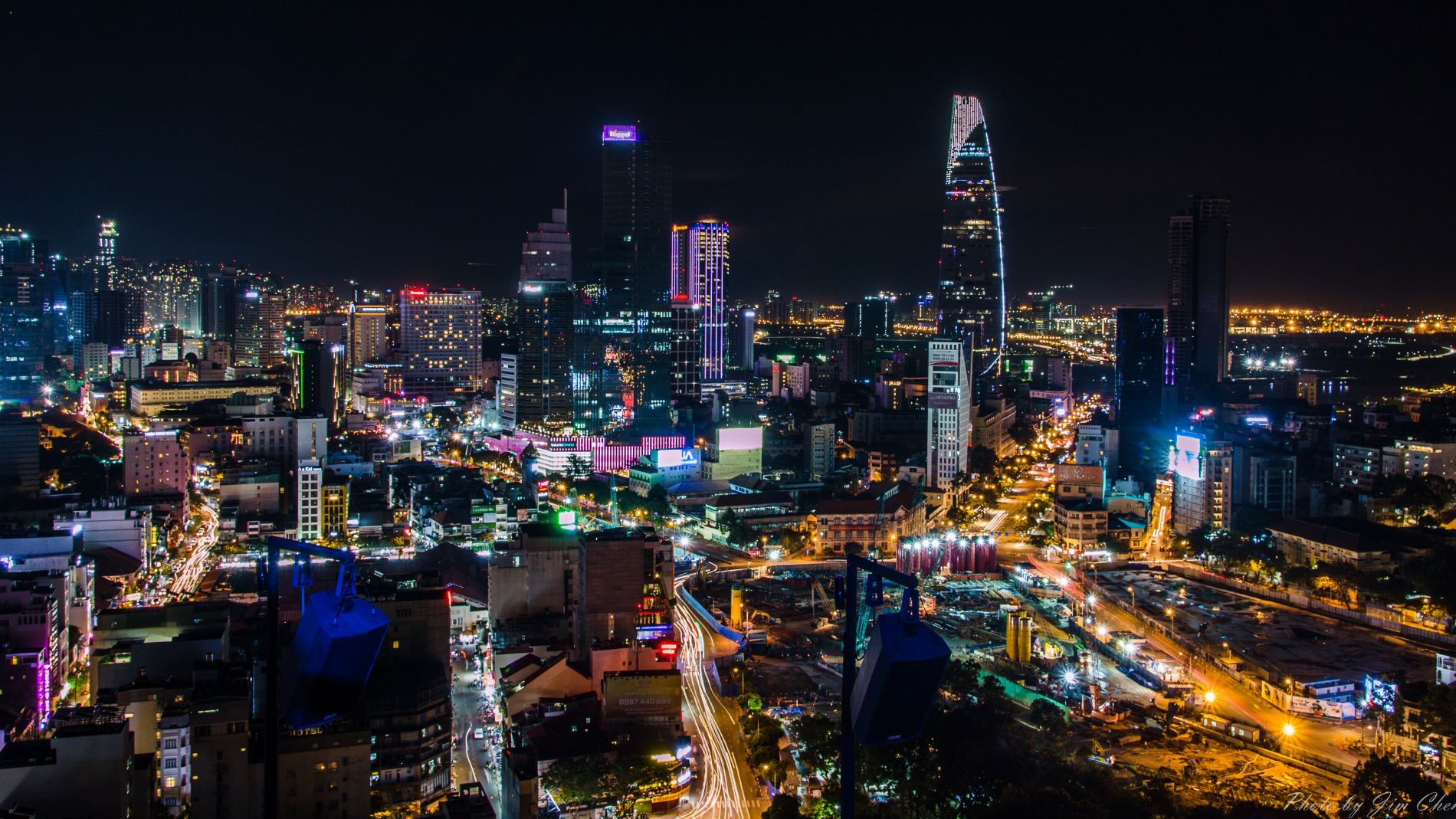From "good student" on the tourism recovery track to "bottom of the class" for not achieving the target
According to data from Google, the number of international searches for tourist accommodation in Vietnam in August 2022 increased nearly 7 times compared to the beginning of March 2022 and increased over 1,200% compared to the same period in 2021. Meanwhile, the number of searches for international flights to Vietnam increased more than 3 times.
After opening tourism on March 15, 2022, Vietnam is the only country among 21 APEC economies that does not impose any travel restrictions, does not require COVID-19 vaccination certificates, does not require COVID-19 testing, does not require quarantine, and does not require health declarations.
Immediately after that, SEA Games 31 was considered a golden opportunity for the tourism industry after a long period of closure due to the pandemic. And last year, Vietnamese tourism excelled in winning 16 of the world's top award categories presented by the "Oscars of Tourism" - World Travel Awards.
In 2022, Vietnam will continue to be among the fastest growing destinations in the world, with a growth rate of 50-75% compared to the same period of the pandemic. Domestic tourists are estimated to reach 101.3 million (more than 1.5 times higher than the target of 60 million visitors), far exceeding the 85 million domestic visitors in 2019.
Faced with the situation that China - the main market accounting for more than 32% of visitors to Vietnam - has not yet opened its doors and the military conflict between Russia and Ukraine has also affected the source of visitors from Europe. Vietnam still has great advantages to complete the target of 5 million foreign visitors.
In 2019, Vietnam's tourism industry welcomed over 18 million international visitors, ranking 10th among the countries with the highest number of visitors in Asia and 4th in Southeast Asia. Therefore, the target of 5 million international visitors in 2022 is not too far-fetched for Vietnam's tourism industry.
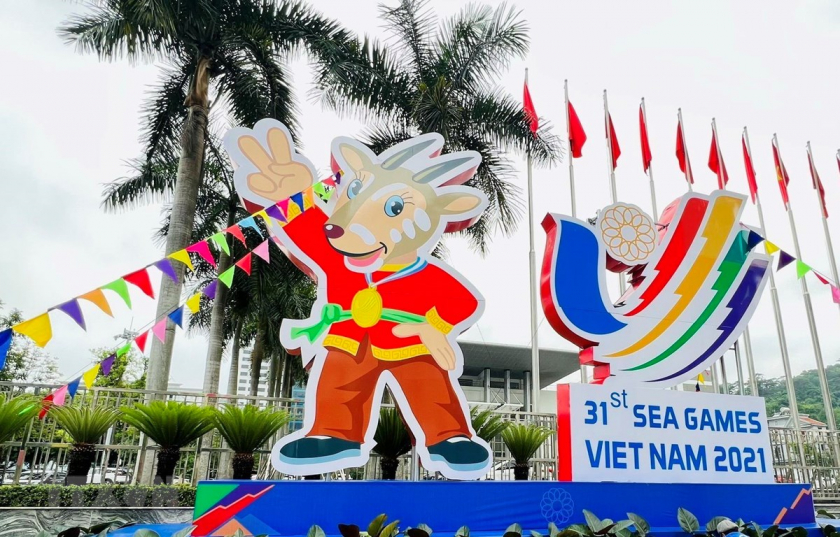
SEA Games 31 is considered a golden opportunity for the tourism industry after a long period of closure due to the pandemic.
However, according to estimates from the National Tourism Advisory Council, in 2022, Vietnam can only welcome about 3.5 million foreign tourists, reaching only 66% of the set target. Meanwhile, many Southeast Asian countries have "reached the finish line" of international visitors in 2022.
The Philippines began to welcome international tourists in February this year and completed the target by the end of October. Indonesia and Cambodia also reached the number of international tourists after 9 months of opening. Malaysia, which only set a target of 2 million international visitors, quickly achieved it in June and successfully reached the target of 4.5 million in September and is aiming for 9.2 million international visitors for the whole year. And on December 10, Thailand, although opening after Vietnam, simultaneously held an event to mark 10 million visitors in 2022.
According to experts, the reason why Vietnam's tourism industry has fallen from a "good student" to the bottom of the Southeast Asia International Tourism Recovery Index after COVID-19, in addition to objective issues, is also subjectivity and lack of timely changes.
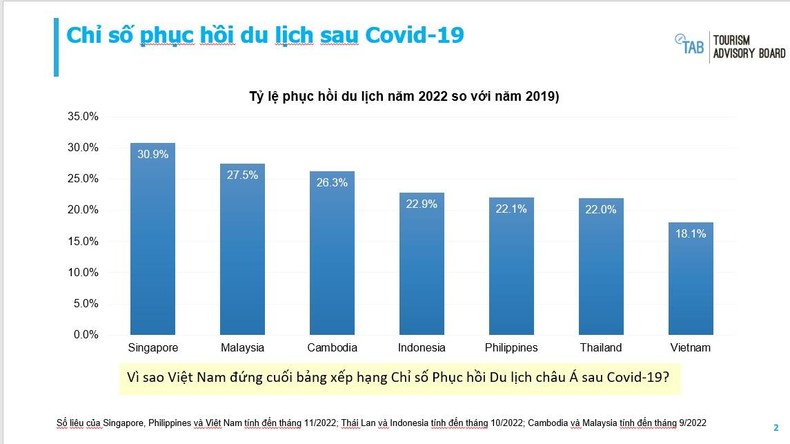
Foreign tourists learn about Vietnam but "close the deal" in Thailand.
At the roundtable conference with the theme Economic and Business Recovery 2023: Solutions to create a breakthrough from the aviation - tourism service pillar held on the afternoon of December 16, the Tourism Advisory Board (TAB) pointed out the barriers that prevent Vietnamese tourism from taking advantage.
- Inconvenient Visa Policy
After COVID-19, visitors need to have sponsor companies or be introduced by visa service agents with very high fees from 200 - 500 USD, while the official visa fee is only 25 USD.
Compared to Thailand, the country has many similarities with Vietnam. This country exempts visas for citizens of 65 countries, while Vietnam only exempts visas for 24 countries and territories. Thailand allows visitors to stay from 30 days to 45 days, even 90 days and to enter and exit multiple times, while Vietnam mostly only allows visitors to stay for 15 days and enter once. This means that to travel to Vietnam for a month, visitors must go to another country to apply for a visa a second time.
According to TAB, Vietnam's e-visa is also inconvenient, visitors still have to apply for approval in advance, not just arrive and apply for a visa directly at the border like some other countries. Despite the announcement of opening to international visitors, the door to Vietnam is not as wide open as advertised.

Thailand allows tourists to stay from 30 days to 45 days, even 90 days and enter and exit multiple times, while Vietnam mostly only allows visitors to stay for 15 days and enter and exit once.
- Knowing the difficulties but having no solutions
By mid-August, Thailand had only received about 3.7 million international visitors, one-third of its target. After that, they quickly took measures to resolve the problem with the coordination of the Ministry of Tourism and Sports and the General Department of Tourism with the "Golden Visa" strategy for visitors up to 45 days with multiple entries and extended.
In the context of difficulty in welcoming international visitors, Thailand has been successful with the "Golden Visa" strategy. According to analysis by the Tourism Authority of Thailand, international visitors with long stays can spend 20-30% more than the current average.
Immediately after the 31st Sea Games, the TAB research team realized that if Vietnam kept the old recovery policy, the number of 5 million international visitors would be difficult to achieve. Mr. Hoang Nhan Chinh, head of the National Tourism Advisory Board (TAB) secretariat, said: "We have recommendations and proposals, but unfortunately they were not listened to. This is very different from other countries. Tourism agencies of countries like Thailand, Singapore... when they feel that the recovery path has problems, they immediately "talk" to relevant agencies and have adaptive policies. We still follow the old way of doing things, while if there were changes in promotion or guest reception policies from around August, perhaps we would have achieved different results now."
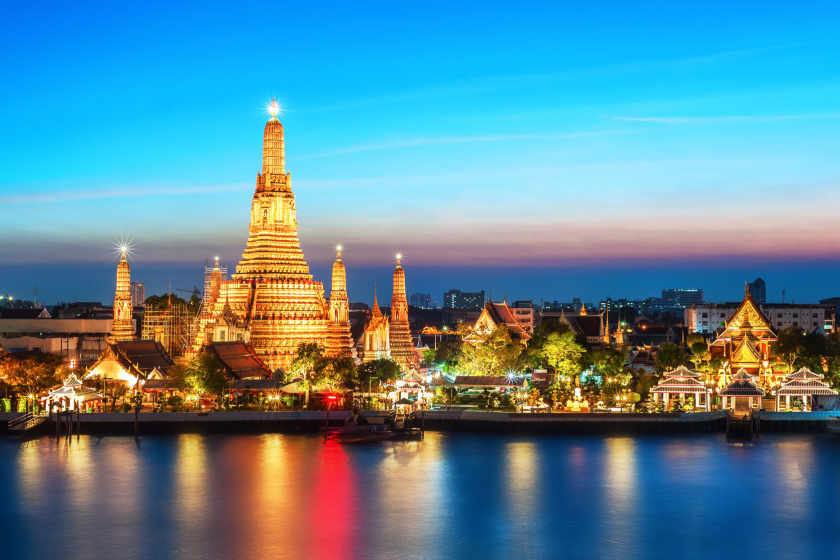
According to analysis by the Tourism Authority of Thailand, long-stay international visitors can spend 20-30% more than the current average.
- Failing to stay ahead of the trend
Tourist behavior has changed compared to before Covid-19. Therefore, marketing promotion, tourism product development, and customer attraction messages... need to be redesigned from scratch. Roadshow activities introducing Vietnamese tourism in key markets and alternative markets are absent. Most promotional activities with new markets such as India and Middle Eastern countries come from travel agencies and airlines.
Target of 8 million international visitors by 2023, reasonable or too safe?
Countries in the region such as Thailand and Singapore have set a growth target of double that of 2022. According to Mr. Hoang Nhan Chinh, Vietnam is setting an "easy to achieve" number.
"The goal of welcoming 10 million international visitors in 2023 is completely reasonable, it's just that we have to solve problems to achieve that number. There must be a clear plan from product development, marketing to troubleshooting policies, which industry needs to get involved or what scenario for aviation to enter first? There must be a division of roles, a commander in chief, a leader to assign responsibilities to each party. Currently, that role is fading," he shared.
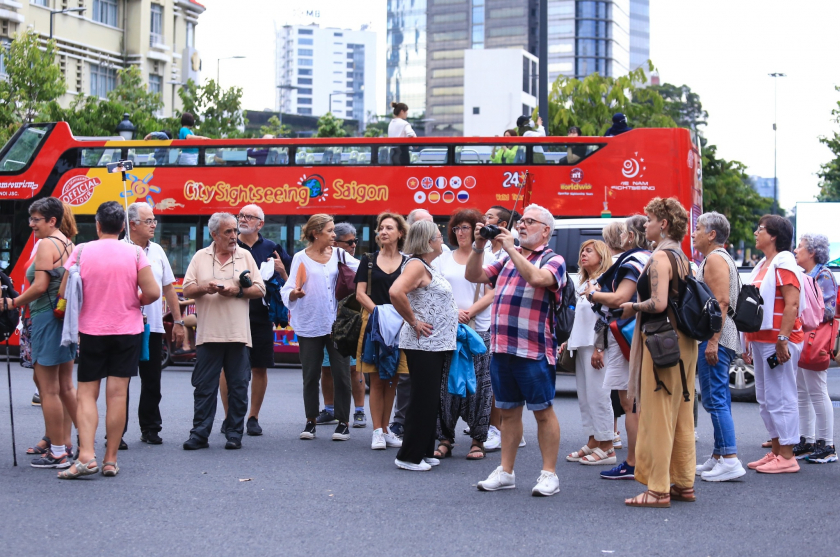
Vietnam aims to welcome 8 million tourists by 2023
However, a representative of a travel company also commented that 8 million international visitors is a safe and necessary target, especially in the context of global inflation still remaining at a high level. Many economists are more pessimistic and believe that a global economic recession may occur in 2023. Currently, Vietnam's tourism is still seasonal, greatly affecting the quality and reputation of many units due to degraded facilities, unstable staff, and many places do not dare to recruit enough human resources for fear of not having enough money for the salary fund after a long period of depleting reserve funds.






